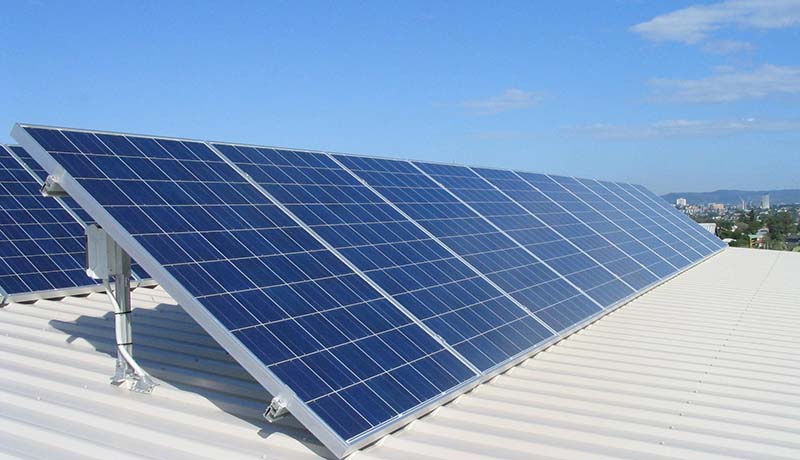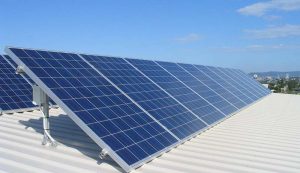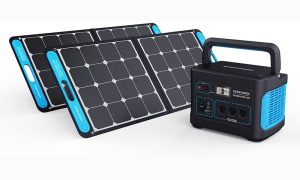
Active Solar Vs. Passive Solar System: What’s the Difference?
Solar energy is a renewable and clean source of power that can be used to generate electricity or heat buildings and water. Solar energy is produced by capturing the sun’s energy using photovoltaic panels or solar thermal collectors.
There are two main types of solar systems: active solar systems and passive solar systems. Active solar systems use mechanical or electrical devices to capture, store, and distribute solar energy. Passive solar systems, on the other hand, rely on the natural movement of the sun to provide heat and light. In this blog post, we will explore the differences between active and passive solar systems and discuss the pros and cons of each type.
Active Solar Systems
Active solar systems use devices such as photovoltaic panels or solar water heaters to capture and store solar energy. Photovoltaic panels, also known as solar panels, convert sunlight into electricity. Solar panels are made up of photovoltaic cells that generate electricity when exposed to sunlight. The electricity produced by solar panels can be used to power homes, businesses, or other buildings.
Solar water heaters use solar energy to heat water for domestic use or for heating buildings. There are two main types of solar water heaters: direct circulation systems and indirect circulation systems. Direct circulation systems pump water through solar collectors and into the home, while indirect circulation systems use a heat-transfer fluid to collect solar energy and transfer it to the water in a storage tank.
Pros of active solar systems:
- Active solar systems can generate electricity or heat water on demand.
- Active solar systems can be used in a variety of climates and locations.
- Active solar systems can be easily integrated into existing building systems.
Cons of active solar systems:
- Active solar systems require a mechanical or electrical system to operate, which can be complex and expensive to install and maintain.
- Active solar systems may not work as effectively in cloudy or shaded locations.
- Active solar systems may require a backup energy source, such as a battery or generator, to function during periods of low solar radiation.
Passive Solar Systems
Passive solar systems rely on the natural movement of the sun to provide heat and light. Passive solar systems do not use mechanical or electrical devices to capture, store, or distribute solar energy. Instead, they use the sun’s energy to heat and light buildings through the use of solar windows, thermal mass, and other passive solar technologies.
Solar windows are windows that are designed to capture and store solar energy. They can be made of special materials that absorb and retain heat or have a coating that reflects sunlight to reduce heat gain. Thermal mass is a material, such as concrete or brick, that absorbs and stores heat. Thermal mass can be used to store solar energy in a building and release it slowly over time to regulate the temperature inside.
Pros of passive solar systems:
- Passive solar systems are simple and inexpensive to install and maintain.
- Passive solar systems do not require a mechanical or electrical system to operate.
- Passive solar systems can reduce the need for heating and cooling systems, resulting in energy savings.
Cons of passive solar systems:
- Passive solar systems may not work as effectively in climates with extreme temperatures.
- Passive solar systems may not provide enough heat or light on their own and may require a supplement such as a heater or light source.
- Passive solar systems may require careful design and orientation to maximize their effectiveness.
Comparison of Active and Passive Solar Systems
When deciding between active and passive solar systems, there are several factors to consider, including the location, climate, and energy needs of the building.
Advantages of active solar systems:
- Active solar systems can generate electricity or heat water on demand, making them more reliable and efficient than passive systems.
- Active solar systems can be used in a variety of climates and locations, while passive solar systems may not work as effectively in extreme temperatures.
- Active solar systems can be easily integrated into existing building systems, allowing for a seamless transition to solar energy.
Advantages of passive solar systems:
- Passive solar systems are simple and inexpensive to install and maintain, as they do not require a mechanical or electrical system to operate.
- Passive solar systems can reduce the need for heating and cooling systems, resulting in energy savings.
- Passive solar systems do not produce any emissions, making them a clean and sustainable source of energy.
Factors to consider when deciding between active and passive solar systems:
- Location and climate: Passive solar systems may not work as effectively in climates with extreme temperatures, while active solar systems can be used in a variety of locations.
- Energy needs: Active solar systems can generate electricity or heat water on demand, making them suitable for buildings with high energy needs. Passive solar systems may not provide enough heat or light on their own and may require a supplement such as a heater or light source.
- Budget and maintenance: Active solar systems may be more expensive to install and maintain than passive solar systems, but they can also be more efficient and reliable.
Examples of when to use active vs passive solar systems:
- If you live in a sunny location with high energy needs, an active solar system such as photovoltaic panels or a solar water heater may be the best option.
- If you live in a climate with moderate temperatures and have a low energy demand, a passive solar system such as solar windows or thermal mass may be sufficient.
- If you are looking for a simple and inexpensive way to incorporate solar energy into your home or business, a passive solar system may be the way to go.
Conclusion
In summary, active and passive solar systems are both effective ways to harness the power of the sun and use it to generate electricity or heat buildings and water. Active solar systems use mechanical or electrical devices to capture and store solar energy, while passive solar systems rely on the natural movement of the sun to provide heat and light. Both types of solar systems have their own advantages and disadvantages, and the best choice will depend on the location, climate, energy needs, and budget of the building. Whether you choose an active or passive solar system, making the switch to solar energy can help reduce your carbon footprint and contribute to a more sustainable future.

